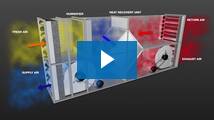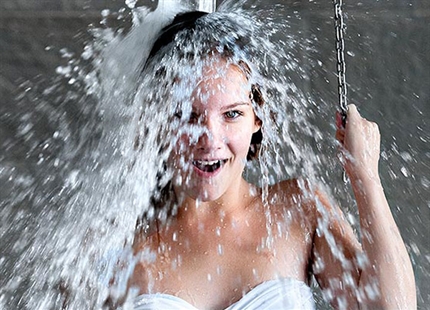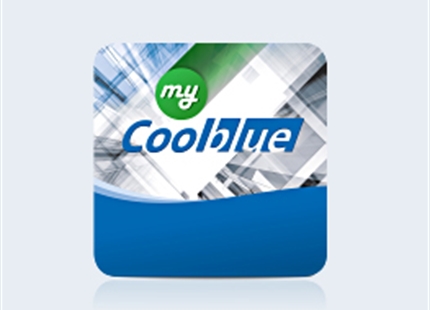
The potential of in-duct evaporative cooling
When 1kg of moisture is delivered to the air by an adiabatic humidifier, 680W of evaporative cooling is achieved. As a single adiabatic humidifier can provide up to 1,000kg/h of moisture from as little as 300W of electricity, their potential for providing low cost cooling in air handling units is great.
There are three main strategies for in-duct evaporative cooling:
1kg of adiabatic humidification provides 680W of evaporative cooling
Direct evaporative cooling
Humidity is added to the incoming fresh air stream, reducing its temperature whilst increasing its humidity. This conditioned air is supplied directly to the room with a high percentage of the room air being exhausted, rather than re-circulated, to maintain a low humidity level in the room.
The amount of cooling that can be achieved depends upon the humidity level of the incoming air stream. Air with a lower humidity will absorb more moisture, resulting in a greater evaporative cooling effect.
Direct evaporative cooling in an air handling unit, raises the humidity and reduces the temperature
In-direct evaporative cooling
This strategy uses the outside air to cool an internal environment without any mixing of the internal and external air streams. Fresh outside air is run through the AHU's heat recovery (HR) unit and then exhausted, while the return air from the room is run through the HR unit before being re-introduced to the room. When the external air stream's temperature is cooler than the internal air stream, its cool thermal energy is transferred and cools the room.
By humidifying the external air stream prior to the HR unit, its temperature is reduced, enhancing the cooling capacity of the system. This allows an in-direct cooling strategy to be used even when the outside temperature is warmer than the desired supply condition to the room. A higher velocity on the external air stream than the internal further increases the cooling capacity of the system.
In-direct evaporative cooling reduces the temperature without internal and external air streams mixing or moisture being added to the internal air stream
Exhaust air evaporative cooling
The air extracted from the room is first cooled by the humidifier and then run through a HR unit before being vented outside. The cool thermal energy provided by the humidifier is transferred to the incoming air stream by the HR unit, cooling it by a few degrees and reducing the required load on DX air conditioning systems.
As there is no mixing of the humidified exhaust air and the incoming fresh air, there is no moisture added, so cooling occurs irrespective of the incoming air's humidity level.
Exhaust air cooling reduces the temperature of the incoming fresh air without adding moisture
Benefits of working with Condair on your evaporative cooling project:
- Comprehensive range of adiabatic humidifiers to suit any AHU strategy
- Ability to adapt a system for an AHU manufacturer's specific requirements
- Extensive experience in evaporative cooling projects around the world
- Comprehensive service of expert advice, system design, manufacture, supply, installation, commissioning, service and spares supply
- Low maintenance systems to minimise on-going service requirements
- World leading, innovative proven solutions
- Air Handling Systems Ltd, UK
- Barkell Air Handling Units, UK
- AirDesign (UK), UK
- Microsoft, Ireland
- EDPAC, Ireland
- Danann Clean Air Services, Ireland
- The Kranhaus, Germany
- KMPG Office, Luxembourg
- Scandic, Norway
- Al Nariyah North South Railway, Saudi Arabia
You may also be interested in...
Condair ME helps EDPAC cool at CIX
The Condair ME evaporative humidifier is providing adiabatic cooling in an innovative indirect cooling system from EDPAC at the Cork Internet Exchang...
Click hereCondair ME evaporative humidifier & cooler
The Condair ME provides low energy humidity control and evaporative cooling to an air handling unit or duct. Its innovative and patented features pos...
Click hereCondair Humidifies Facebook
Condair humidification systems are maintaining the humidity in Facebook's new data centre in Sweden. In keeping with its state-of-the-art efficiency,...
Click hereCondair helps cool Microsoft Dublin
Condair has supplied 35 evaporative humidifiers to Microsoft’s $500 million mega data centre in Dublin, Ireland, to provide up to 8°C of low energy e...
Click hereEvaporative humidifier provides cooling to packaged AHU
Evaporative humidifiers selected by AHS for the in the innovative OptEvent™ packaged air handling unit.
Click hereDirect and indirect evaporative cooling strategies
Dave Marshall-George looks at the different evaporative cooling strategies for AHUs.
Click hereWorld's largest evaporative cooling system
Condair conditions the air across a 15-hectare site in the Saudi Arabian city of Medina by up to 10°C.
Click hereEvaporative cooling
Tim Scott describes how cold water humidifiers are used to provide low energy, low cost cooling.
Click heremyCoolblue app
App for calculating the energy savings from an exhaust air evaporative cooling system
Click here












